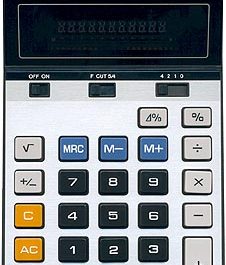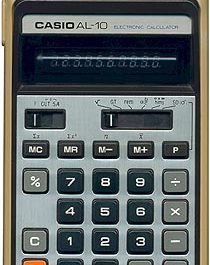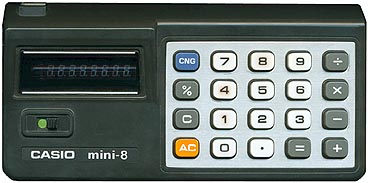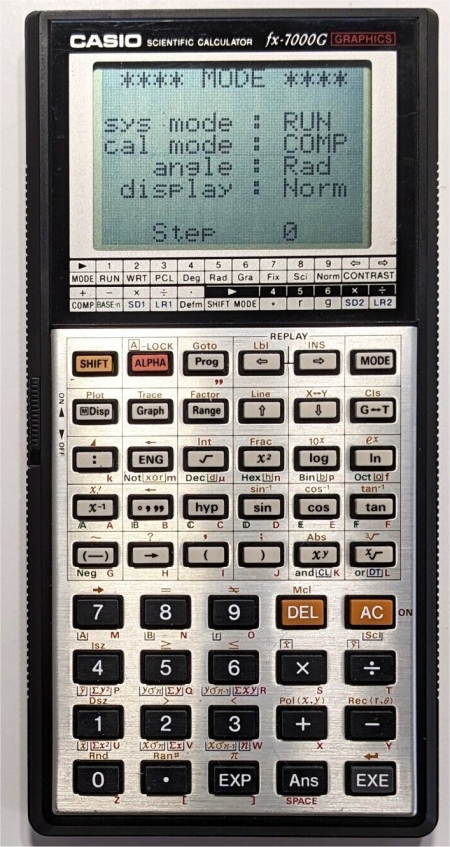
Personal computers were still in their infancy in the early 1980s, and scientific calculators represented the pinnacle of portable computing power. Japanese manufacturer Casio had been producing calculators since the 1970s, but took a huge leap forward in capabilities with the 1985 launch of the Casio FX-7000G. This was Casio’s first graphing programmable calculator, and it caused quite a stir in the market.
The FX-7000G sported a large LCD dot matrix display capable of showing 16 characters per line over 8 lines of text. The display could also be switched to a 95×63 pixel mode for graphing functions. The calculator was driven by a 13-digit internal mantissa and could handle advanced math, statistics, Boolean logic, hexadecimal conversions, coordinate transformations, and more.

Key features of the FX-7000G included:
Logic:
- Four standard math functions, along with square roots, squares, factorials, trig functions, logs, etc.
- Statistical functions for means, standard deviation, linear regression
- Boolean logic operators and relational operators for comparisons
- Hexadecimal, binary, octal conversions
- Graphing functions with tracing and zoom
- Programmable mode with 422 step capacity over 10 programs
- Alphanumeric input and storage in memory registers
- Multiple display modes including sexagesimal and binary
- Matrix calculations and coordinate transformations
- Internal memory storage for formulas and programs
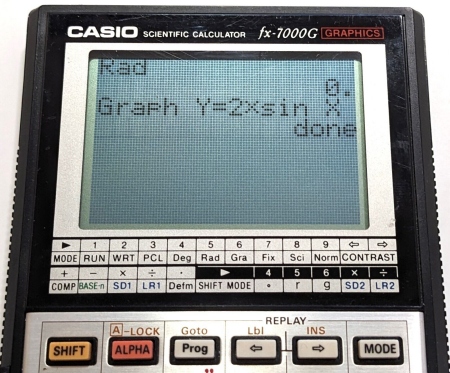
This powerful set of features was crammed into a slim plastic case measuring 83.5 x 167 x 14mm. The FX-7000G required 3 lithium CR2032 button batteries and had a battery life around 120 hours. It featured a full metal rear panel and used high quality plastic keys with a positive feel.
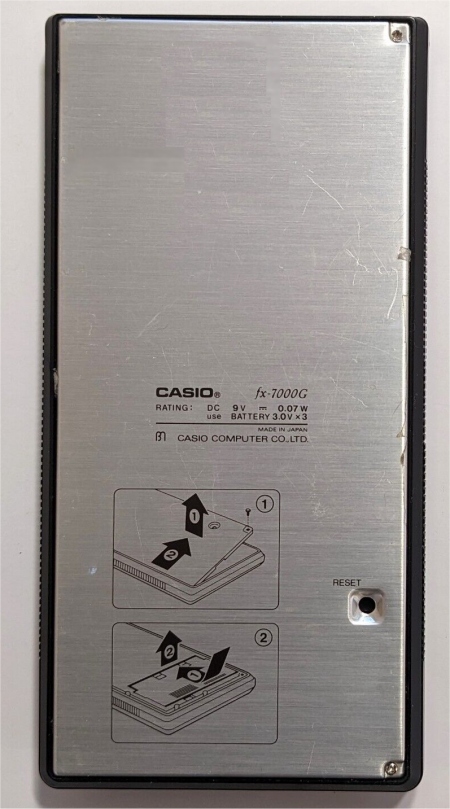
The FX-7000G represented a major advance in capabilities compared to previous scientific calculators. It presaged the programmable graphing calculators that would become commonplace for math and science students in the 1990s. The large range of built-in math, logic, and conversion functions gave the FX-7000G capabilities comparable to some contemporary desktop computers.
